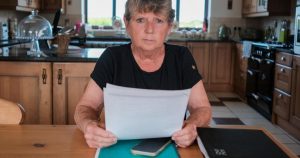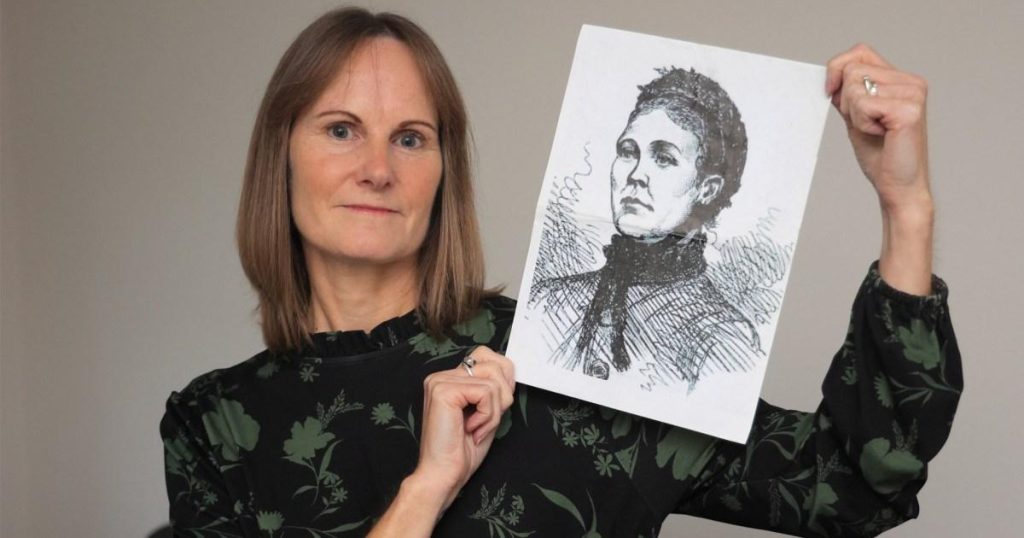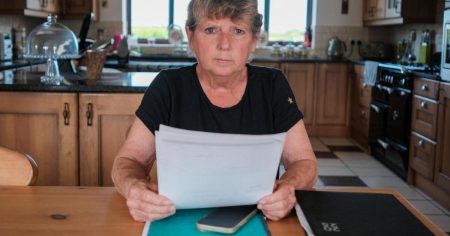The Pursuit of Justice for Jack the Ripper’s Victims: A New Inquest Sought
The specter of Jack the Ripper, the notorious serial killer who terrorized London in 1888, continues to haunt the city’s history. His five victims, brutally murdered and left in the fog-laden streets of Whitechapel, became symbols of vulnerability and the dark underbelly of Victorian society. While their names faded into the annals of unsolved crimes, the mystery of their killer’s identity has captivated generations. Now, over a century later, the descendants of these victims are renewing their fight for justice, seeking a new inquest into the death of Catherine Eddowes, one of Ripper’s victims. Armed with what they believe to be compelling DNA evidence linking Aaron Kosminski, a Polish immigrant barber, to the crimes, they hope to finally unmask the true face of the Ripper and bring closure to a long-standing historical injustice.
The heart of this renewed pursuit for justice lies in a bloodstained shawl, purportedly found at the scene of Eddowes’ murder. Purchased in 2007 by Russell Edwards, an amateur sleuth captivated by the Ripper case, the shawl became the focus of intense scientific scrutiny. DNA analysis, conducted by Jari Louhelainen, a renowned forensic scientist, revealed traces of both Eddowes’ and Kosminski’s DNA on the shawl. This discovery, publicized in 2014, reignited public interest in the case and fueled Edwards’ conviction that Kosminski was indeed the Ripper. Now, he has assembled a legal team to petition for a new inquest, arguing that this crucial piece of evidence warrants a re-examination of the case.
The descendants of the victims have rallied behind Edwards’ efforts, seeing the potential for a long-awaited resolution. Karen Miller, Eddowes’ three-times great-granddaughter, provided her DNA to confirm the link between the shawl and her ancestor. For her and other descendants, the focus has always been on the victims, women whose lives were tragically cut short and whose stories have been overshadowed by the notoriety of their killer. They believe that a new inquest, officially naming Kosminski as the murderer, would be a critical step towards acknowledging the victims’ suffering and restoring their dignity. This sentiment is echoed by Sue Parlour, whose husband is distantly related to Mary Ann Nichols, another of the Ripper’s victims. She emphasizes the societal disregard these women faced in their time, often dismissed as mere prostitutes, their lives deemed less valuable. A formal recognition of their killer’s identity, she argues, would be a powerful statement of their inherent worth and a step towards reclaiming their place in history.
Surprisingly, Kosminski’s descendants have also expressed support for the new inquest. Amanda Poulos, Kosminski’s three-times great-niece, welcomes the opportunity to finally uncover the truth about her ancestor’s alleged involvement in these horrific crimes. This unified stance from both sides of this historical tragedy highlights the shared desire for closure and a definitive resolution to the Ripper mystery.
The legal path to a new inquest is fraught with challenges. The Attorney General holds the power to grant permission for an application to the High Court. Two years prior, a similar request was denied due to what was deemed insufficient new evidence. However, Dr. Tim Sampson, the barrister representing Edwards, argues that the DNA evidence from the shawl constitutes a significant breakthrough and warrants a fresh look at the case. He criticizes the previous denial as setting a dangerous precedent, suggesting that cases involving violence against women are easily dismissed. He insists that if this DNA evidence had been available during the original investigation, it would have justified charging Kosminski with the murders.
Despite these legal hurdles, there is a glimmer of hope in the stance of East London coroner Nadia Persaud. She has indicated a willingness to conduct a new inquest, suggesting that while the outcome might not differ from the original verdict of "wilful murder," the identification of a potential perpetrator adds a new dimension to the case. This openness from a key legal figure offers encouragement to those seeking to reopen the investigation. Edwards remains steadfast in his belief that a second inquest is essential for confirming the truth and finally bringing justice to the victims and their families. The renewed push for a new inquest represents more than just an attempt to solve a historical mystery. It’s a testament to the enduring power of memory and the unwavering commitment to seeking justice for those whose lives were tragically cut short. The victims of Jack the Ripper, long relegated to the shadows of history, may finally have their voices heard and their stories acknowledged.











